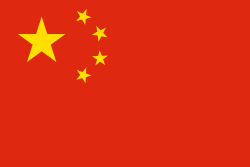How can I handle "in advance" customer payments (deposits) which are liabilities, not AR credits...?
1 Answer
You do this with a Down Payment Invoice.
Create a Down Payment service with a Service Invoicing Policy set to Ordered Quantities and configured to book the "income" into your preferred Current Liabilities account:
For a Sales Order with Order Lines like this:
When you click Create Invoice from the Sales Order, create a Down Payment Invoice like this:
Your Sales Order will then look like this:
And the Invoice Journal Items will look like this:
When you receive Payment for this Invoice, and reconcile this Payment with your Bank, your GL will look like this:
When you create the Final Invoice for the Sales Order (after you have delivered and/or completed your Customer obligation):
Your Final Invoice will look like this:
The related Journal Entry:
To recap:
1) The Down Payment Invoice credits the Current Liability account.
2) The Payment for the Down Payment Invoice clears the AR debit and you have not yet recorded any Income.
3) The Final Invoice debits the Current Liability account and debits AR for what the Customer owes. NOW you record Income for the full amount of the Sales Order.
In this way, you are recording a liability until the time you record the final customer invoice, at which point the liability is cleared. To make it clear what is happening, both the Sales Order and the Invoice reflect the downpayment amount (either a flat fee or a percentage).
Note: This works if you need to create more than one deposit invoice (in situations where you require more than one downpayment such as installments) and it also works if you need to create more than one final invoice (in situations where you dot not ship all products at the same time and/or do not fulfill all service obligations at the same time).
Ray - when we use the Down Payment functionality in Odoo, what is the best way to gain visibility of outstanding (unapplied) prepayments?
Since paid prepayments don't show on the Aged Receivables report, I'm not sure of the best practice for tracking the outstanding liabilities. I know we can see the transactions on the General Ledger, but then we have to match them up. I cannot figure out a filter on Customer Payments to display down payments. Is there a report you like to use?


@Ray Waiting for your answer ;-)
I cannot reply you as a answer, so I could only comment for you. TxT
There are two ways you could do it, by deposit product or a credit note;
1. Deposit Product
Enable the function of "Down Payment" by Sales -> Configuration -> Setting, Invoicing and select a product as for the deposit. To create a down payment product, please read [[https://www.odoo.com/forum/help-1/question/how-to-configure-the-down-payment-product-in-v11-deposit-127715]] One more tips, you gotta change the debit and credit accounts at the "Down Payment" product in the tab of Invoicing.
2. Credit Notes
There is a credit note under "Invoicing" application. You could do it this way if your customer doesnt need a Deposit invoice. Create a Credit Note when you received a payment in advance. When the order is done, create and save an invoice. Select the Credit Note as one of the payment receipts, then print the Invoice (not the invoice without payment). The outstanding amount will be shown with the reduction of payment in advance.